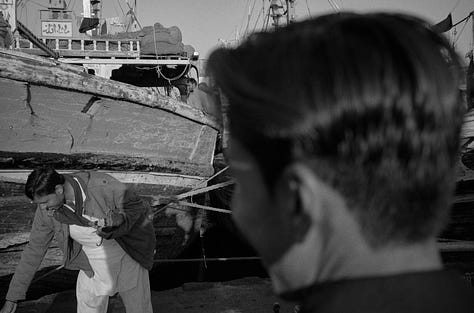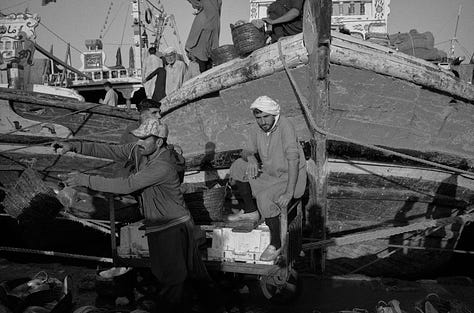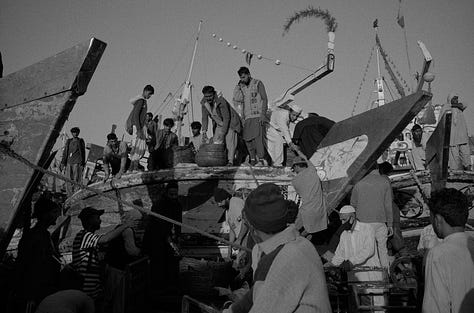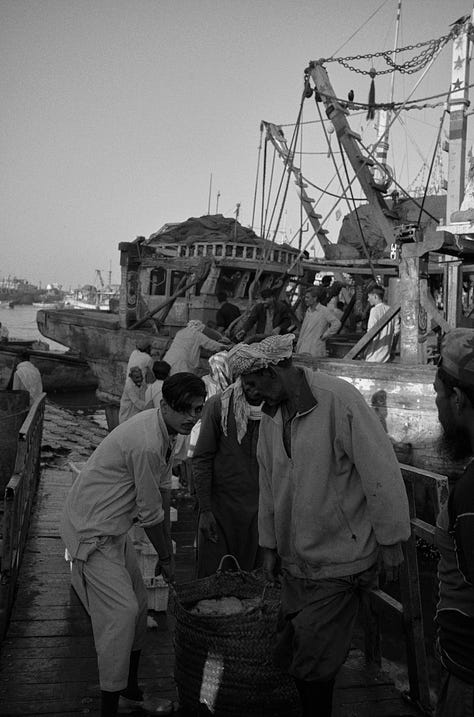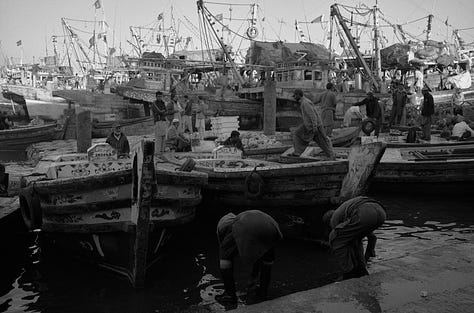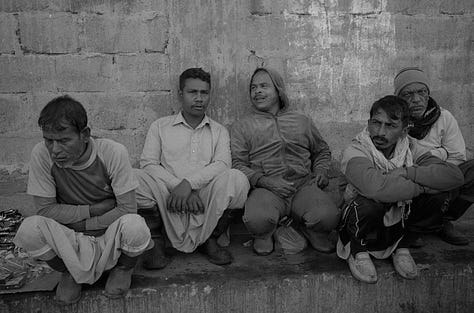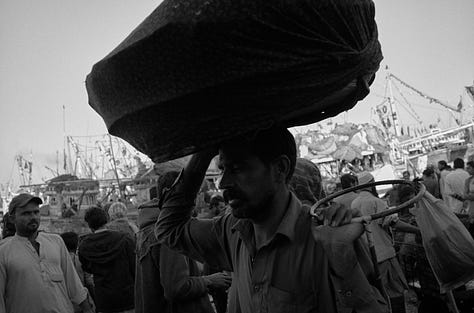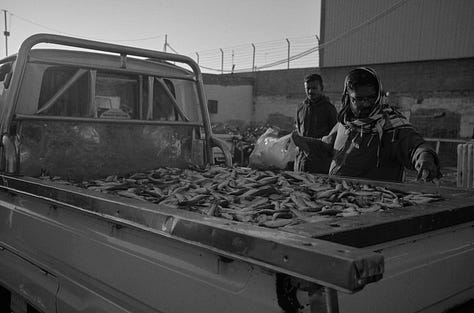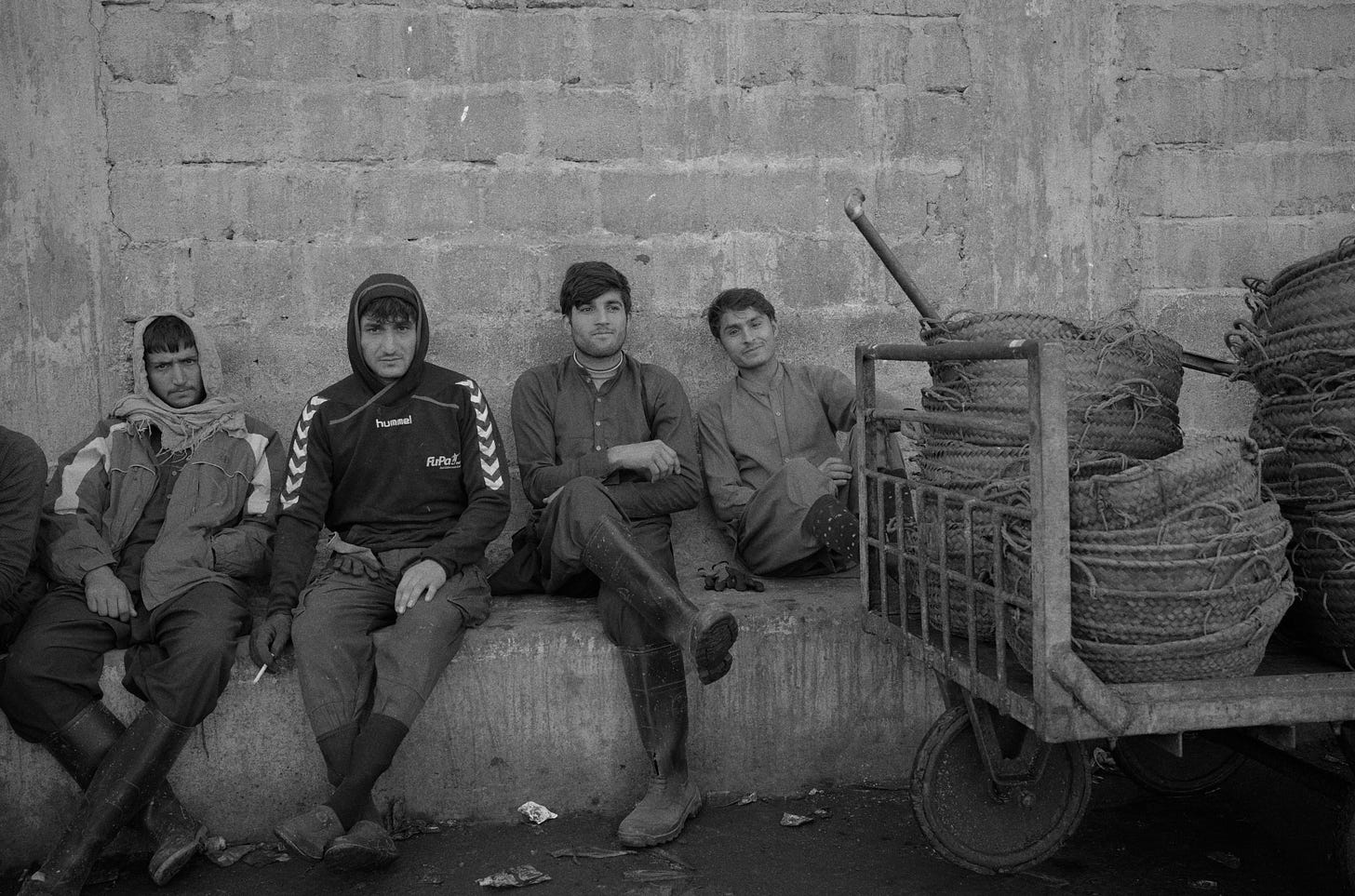Tides of Toil: The Silent Labour of Karachi’s Fishermen
Before the city awakens, the sea has already surrendered its wealth—this is the unseen world of those who bring the ocean’s bounty to our tables.
The sea has already surrendered its bounty by the time the first rays of sunlight touch the wooden hulls of Karachi’s fishing boats. At Kemari Fishery Harbour, dawn does not mark the start of the day—it signals its end. The night’s labour is nearly complete, and the air is thick with the mingling scents of saltwater, fish, and sweat. This is the world I stepped into, my Leica M10M in hand, capturing the silent poetry of an industry that operates while the city sleeps.
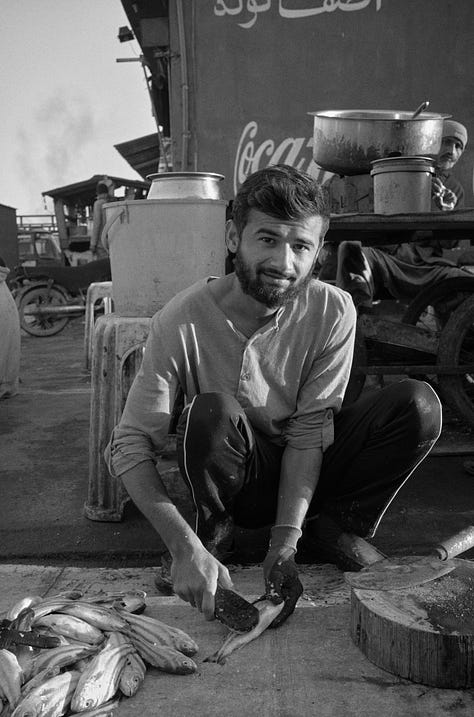
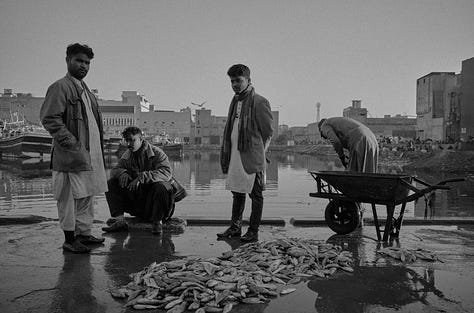
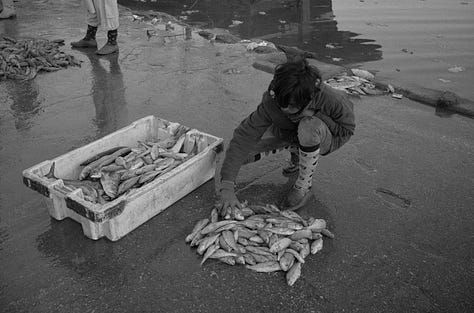
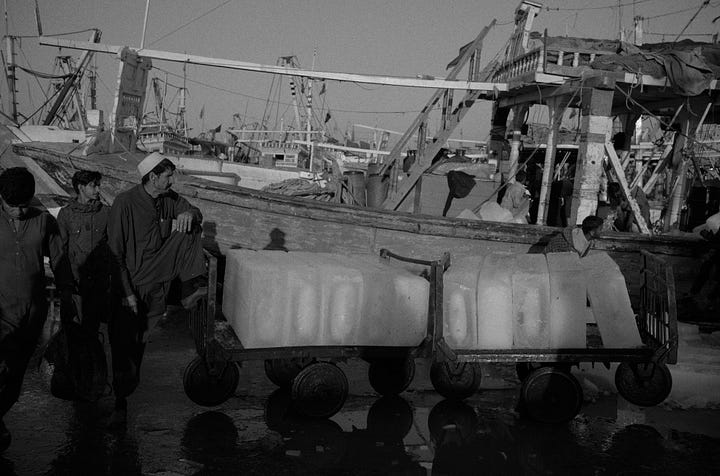
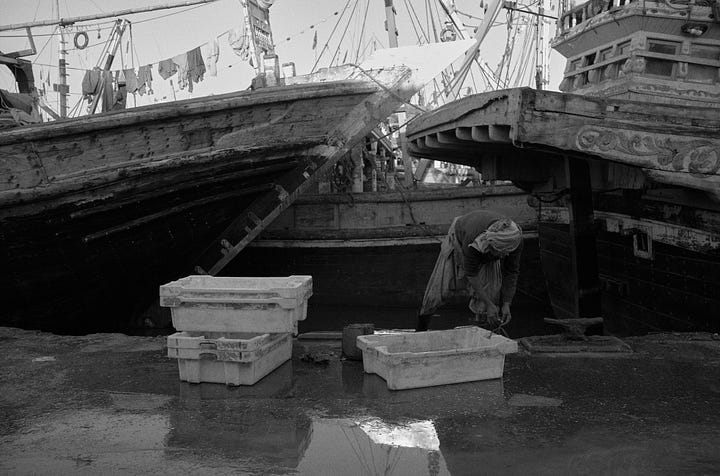
Silent Movements, Heavy Work
In the dim early light, figures move like shadows against the backdrop of towering fishing vessels. My first frame captures a fisherman hunched over, cleaning the dock with the precision of someone whose hands have repeated these motions thousands of times. His face is obscured, lost in the act of labour, as wooden boats—aged, weathered, yet still proud—loom behind him. A network of ropes and laundry hangs above, fluttering like flags of a seafaring kingdom.
This image, stark and textured in black and white, echoes the quiet dignity of these men—those who bring the sea’s riches to land but rarely partake in the wealth they create.
The Icy Economy
Further into the heart of the harbor, chaos meets routine. Large woven baskets brimming with ice and fish are heaved onto wooden carts, while men move in a choreographed frenzy. The floor is slick with melted ice, a mirror to the high walls stained with years of toil.
One worker, barely out of his teenage years, upends a basket of ice, his posture and expression frozen in focus. Around him, older men navigate the floor with steady hands, some stacking baskets, others dragging heavy loads. There’s an unspoken order to the madness—each movement serves a purpose, each bead of sweat a currency exchanged for survival.
The Men Behind the Trade
Despite the fatigue of a night’s labour, a few faces brighten for the camera. Perched on the edge of a boat, a fisherman flashes a subtle yet knowing smile, acknowledging the presence of an observer in his world. Behind him, others remain lost in their own conversations, their postures relaxed, their expressions unreadable.
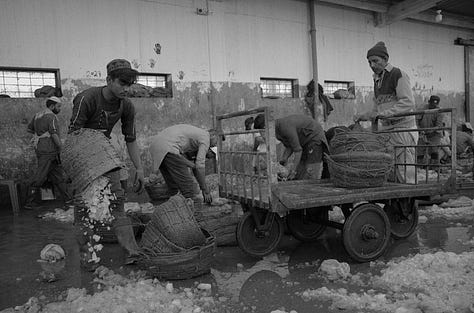
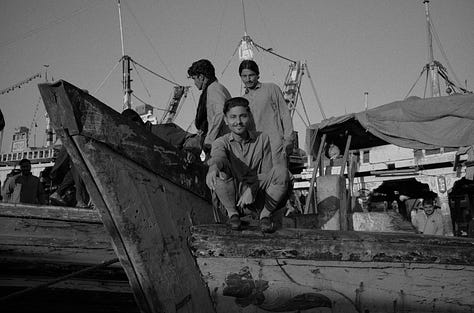
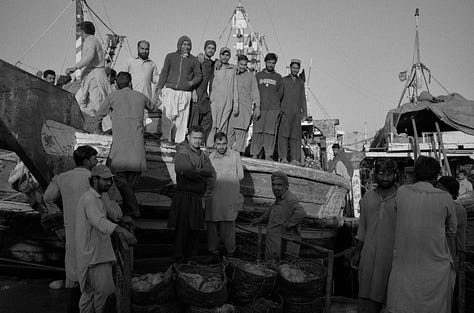
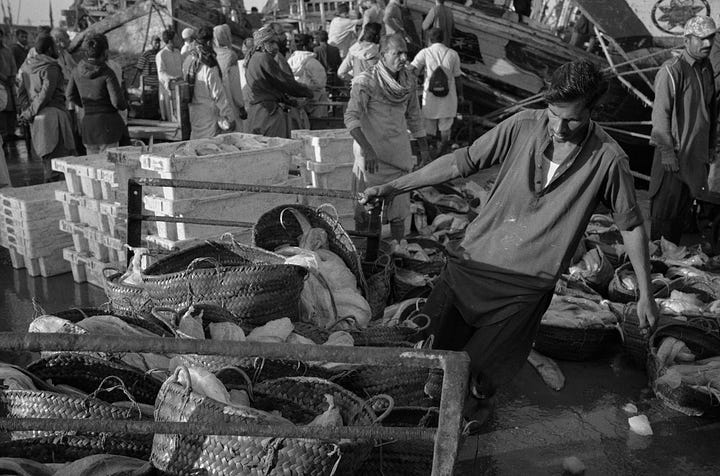
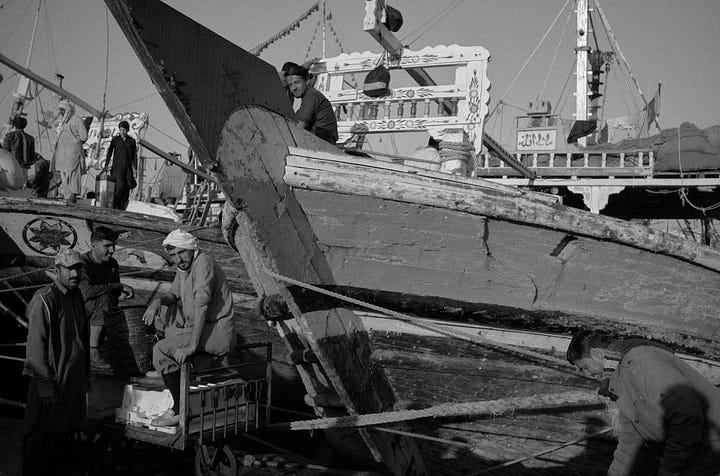
What strikes me is the camaraderie—this is not just labour, it is a brotherhood forged by the sea. There is pride in their stance, in the way they lean on the wooden railings of their boats like guardians of the tides.
A Portrait of Resilience
The final frame is of a group gathered on the deck, a collective portrait of the men who breathe life into Karachi’s seafood industry. They stand in various states of weariness and amusement, some posing with intent, others caught mid-thought. Their clothes are simple, their hands rough, yet their presence is powerful.
These are not just fishermen; they are storytellers, craftsmen, and custodians of a trade as old as time. Through my lens, I see resilience—a relentless cycle of toil that feeds a city yet remains largely unseen.
Black and white photography strips away distraction, allowing the essence of their world to emerge—the contrast of darkened, calloused hands against the gleam of fresh fish, the weight of exhaustion against the sharp morning light.
At Kemari Fishery Harbour, the day begins when others rest. And as I lower my camera, I realize I have not merely documented fishermen—I have captured the silent strength of Karachi’s working class.
